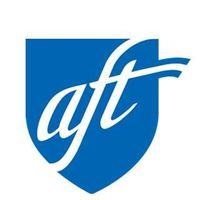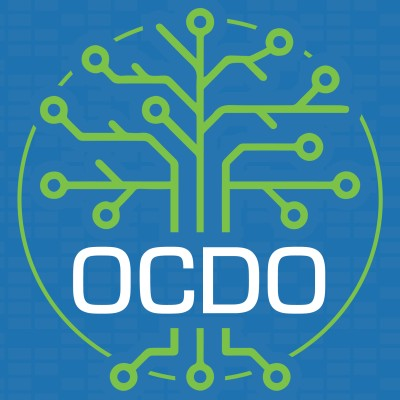The Reopening of Income-Driven Repayment Plans: A Lifeline for Student Borrowers
March 28, 2025, 11:07 am
Federal Student Aid
Employees: 201-500

Location: United States, District of Columbia, Washington
Employees: 501-1000
Founded date: 1916

Location: United States, District of Columbia, Washington
Employees: 201-500
Founded date: 2019
Total raised: $1.25M
The U.S. Department of Education has reopened the doors to income-driven repayment (IDR) plans, offering a glimmer of hope to millions of federal student loan borrowers. This decision comes after a tumultuous period marked by legal battles and administrative shifts. The landscape of student loan repayment is changing, and understanding these changes is crucial for borrowers navigating their financial futures.
In March 2025, the Trump administration announced the reopening of online applications for IDR plans. This move follows a significant pause earlier in the year, when applications were taken down in response to a court ruling. The 8th U.S. Circuit Court of Appeals had blocked the Biden administration's new IDR plan, known as SAVE (Saving on a Valuable Education). The court's decision sent ripples through the student loan community, leaving many borrowers in limbo.
IDR plans are designed to ease the burden of student loan debt. They allow borrowers to make monthly payments based on their income, ensuring that repayments remain manageable. The plans cap payments at a percentage of discretionary income and offer forgiveness after a set period, typically 20 to 25 years. This structure aims to provide a safety net for those struggling to keep up with their loans.
As of September 2024, over 12 million borrowers were enrolled in IDR plans. These programs have become a lifeline for many, allowing them to stay afloat in a sea of debt. The reopening of applications is a welcome relief, especially for those who were affected by the abrupt halt earlier this year.
The IDR plans now available include Income-Based Repayment (IBR), Pay As You Earn (PAYE), and Income-Contingent Repayment (ICR). Each plan has its own eligibility criteria and payment structures, catering to different borrower situations. For instance, IBR calculates payments as a percentage of discretionary income, while PAYE offers a similar structure but is limited to new borrowers. ICR, on the other hand, provides flexibility by allowing payments to be the lesser of a percentage of discretionary income or a fixed repayment plan adjusted for income.
The reopening of applications is not without controversy. The American Federation of Teachers (AFT) filed a lawsuit against the Trump administration, arguing that the decision to pause applications was an overreach. The AFT contends that the administration misinterpreted the court ruling, unfairly blocking access to affordable repayment options. This legal battle highlights the ongoing tensions surrounding student loan policies and the impact of political decisions on borrowers' lives.
Despite the criticism, the Trump administration maintains that the pause was necessary to comply with the court's injunction. The acting Under Secretary of Education stated that revisions were made to the application process to align with the ruling. This response reflects the complex interplay between legal mandates and the need for accessible financial solutions for borrowers.
For many, the reopening of IDR applications is a chance to regain control over their financial futures. The standard repayment plan, which typically requires fixed monthly payments over ten years, can be daunting for those with lower incomes or larger debts. IDR plans offer a more sustainable path, allowing borrowers to pay what they can afford while working toward forgiveness.
Navigating the world of student loans can feel like walking through a maze. Borrowers must weigh their options carefully, considering factors such as income, loan type, and long-term goals. The choice between IBR, PAYE, and ICR can significantly impact a borrower's financial trajectory. Each plan has its nuances, and understanding these differences is key to making informed decisions.
The reopening of IDR applications is a critical step in addressing the student loan crisis. It acknowledges the struggles faced by borrowers and provides a framework for more manageable repayment. However, the journey is far from over. The legal battles and policy shifts will continue to shape the landscape of student loans in the coming years.
As borrowers prepare to apply for IDR plans, they should take advantage of available resources. The Federal Student Aid website and loan servicers offer guidance on eligibility and application processes. Knowledge is power, and being informed can make all the difference in navigating the complexities of student loan repayment.
In conclusion, the reopening of income-driven repayment plans is a beacon of hope for millions of borrowers. It represents a commitment to making education more accessible and manageable. As the landscape of student loans evolves, borrowers must stay vigilant and informed. The road ahead may be challenging, but with the right tools and knowledge, they can find their way to financial stability. The reopening of IDR applications is not just a policy change; it’s a lifeline for those seeking to reclaim their financial futures.
In March 2025, the Trump administration announced the reopening of online applications for IDR plans. This move follows a significant pause earlier in the year, when applications were taken down in response to a court ruling. The 8th U.S. Circuit Court of Appeals had blocked the Biden administration's new IDR plan, known as SAVE (Saving on a Valuable Education). The court's decision sent ripples through the student loan community, leaving many borrowers in limbo.
IDR plans are designed to ease the burden of student loan debt. They allow borrowers to make monthly payments based on their income, ensuring that repayments remain manageable. The plans cap payments at a percentage of discretionary income and offer forgiveness after a set period, typically 20 to 25 years. This structure aims to provide a safety net for those struggling to keep up with their loans.
As of September 2024, over 12 million borrowers were enrolled in IDR plans. These programs have become a lifeline for many, allowing them to stay afloat in a sea of debt. The reopening of applications is a welcome relief, especially for those who were affected by the abrupt halt earlier this year.
The IDR plans now available include Income-Based Repayment (IBR), Pay As You Earn (PAYE), and Income-Contingent Repayment (ICR). Each plan has its own eligibility criteria and payment structures, catering to different borrower situations. For instance, IBR calculates payments as a percentage of discretionary income, while PAYE offers a similar structure but is limited to new borrowers. ICR, on the other hand, provides flexibility by allowing payments to be the lesser of a percentage of discretionary income or a fixed repayment plan adjusted for income.
The reopening of applications is not without controversy. The American Federation of Teachers (AFT) filed a lawsuit against the Trump administration, arguing that the decision to pause applications was an overreach. The AFT contends that the administration misinterpreted the court ruling, unfairly blocking access to affordable repayment options. This legal battle highlights the ongoing tensions surrounding student loan policies and the impact of political decisions on borrowers' lives.
Despite the criticism, the Trump administration maintains that the pause was necessary to comply with the court's injunction. The acting Under Secretary of Education stated that revisions were made to the application process to align with the ruling. This response reflects the complex interplay between legal mandates and the need for accessible financial solutions for borrowers.
For many, the reopening of IDR applications is a chance to regain control over their financial futures. The standard repayment plan, which typically requires fixed monthly payments over ten years, can be daunting for those with lower incomes or larger debts. IDR plans offer a more sustainable path, allowing borrowers to pay what they can afford while working toward forgiveness.
Navigating the world of student loans can feel like walking through a maze. Borrowers must weigh their options carefully, considering factors such as income, loan type, and long-term goals. The choice between IBR, PAYE, and ICR can significantly impact a borrower's financial trajectory. Each plan has its nuances, and understanding these differences is key to making informed decisions.
The reopening of IDR applications is a critical step in addressing the student loan crisis. It acknowledges the struggles faced by borrowers and provides a framework for more manageable repayment. However, the journey is far from over. The legal battles and policy shifts will continue to shape the landscape of student loans in the coming years.
As borrowers prepare to apply for IDR plans, they should take advantage of available resources. The Federal Student Aid website and loan servicers offer guidance on eligibility and application processes. Knowledge is power, and being informed can make all the difference in navigating the complexities of student loan repayment.
In conclusion, the reopening of income-driven repayment plans is a beacon of hope for millions of borrowers. It represents a commitment to making education more accessible and manageable. As the landscape of student loans evolves, borrowers must stay vigilant and informed. The road ahead may be challenging, but with the right tools and knowledge, they can find their way to financial stability. The reopening of IDR applications is not just a policy change; it’s a lifeline for those seeking to reclaim their financial futures.